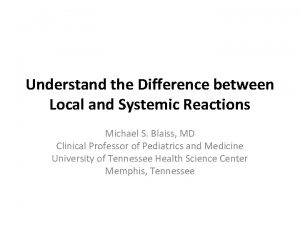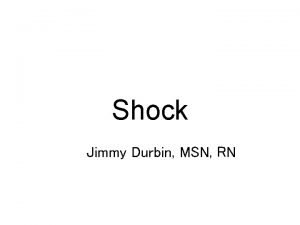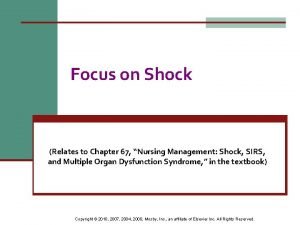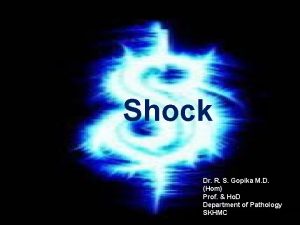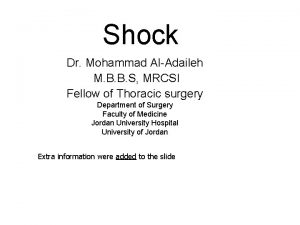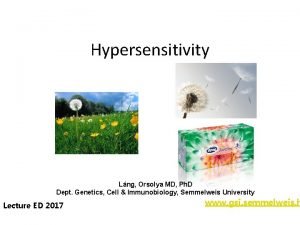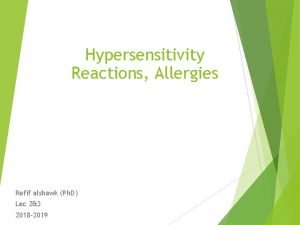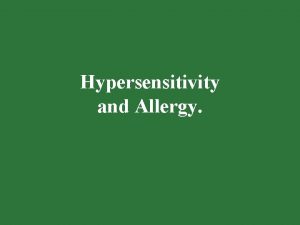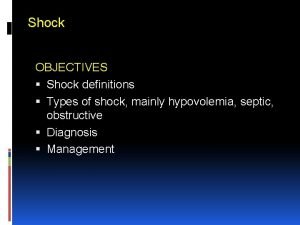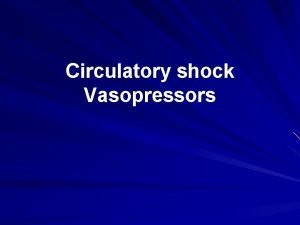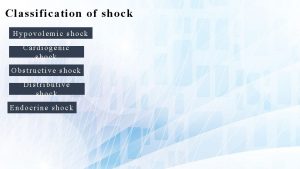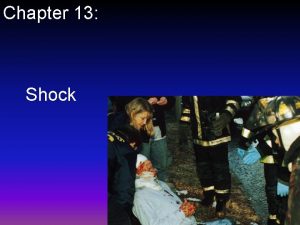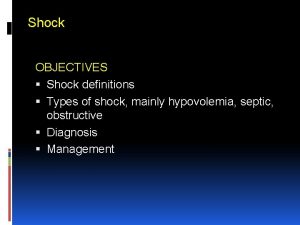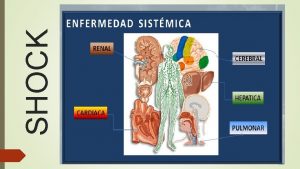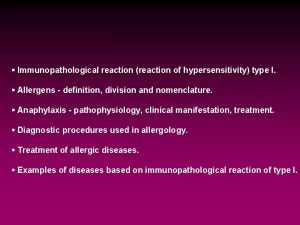ANAPHYLACTIC REACTION ANAPHYLACTIC SHOCK DEFINED Acute systemic hypersensitivity












- Slides: 12

ANAPHYLACTIC REACTION

ANAPHYLACTIC SHOCK • DEFINED: Acute systemic hypersensitivity reaction that occurs within seconds to minutes after exposure to a variety of foreign substances • SUCH AS: medications (penicillin, IVP dye), stinging insects • CAUSED BY: an antigen antibody response

Clinical manifestations • Wide range of clinical manifestations

SKIN MANIFESTATIONS • flushing, • sense of warmth, • diffuse erythema, • generalized itching, • uriticaria (hives), • facial angioedema • leading to respiratory edema

RESPIRATORY SIGNS • • nasal congestion, itching, sneezing, coughing, bronchospasm, edema of the larynx, tightness of the chest, wheezing, dyspnea, cyanosis

CARDIOVASCULAR • Tachycardia • Bradycardia • PERIPHERAL VASCULAR COLLAPSE: pallor, imperceptible pulse, decreasing BP, circulatory failure leading to coma, death

PREVENTION • Determine what patient allergic too through sensitivity testing via allergist • Wear medic alert bracelet • Carry epi-pen, check expiration date

GASTROINTESTINAL • Nausea, vomiting, colicky abdominal pains or diarrhea

NURSING DIAGNOSIS • Decreased cardiac output • Impaired gas exchange • Risk for fluid volume deficit • Anxiety

EMERGENCY MANAGEMENT • Establish an airway while another person gives epinephrine; administer oxygen • Epinephrine SQ or IV provides rapid relief of hypersensitivity reaction and may be repeated • EPINEPHRINE: given to restore vascular tone and raise arterial BP; vasoconstricts • DOSE: 1: 1000 sol (0. 3 ml SQ q 5 -15 min)

EMERGENCY TX CONTINUED • Remove the antigen (blood, penicillin IV, or other antibiotic) • Benadryl IV push – antihistamine effect, reverses histamine effects (vaso-dilation and bronchoconstriction) • Solu-Medrol IVPB as an antiinflammatory • Pepcid IVPB to prevent gastric irritation from steroids

EMERGENCY TX CONTINUED • Check if patient is on beta-adrenergic blocking drugs such as Inderal; • These drugs decrease the effectiveness of the epinephrine • Patient may have a recurrence of symptoms 6 -8 hours after initial anaphylactic reaction
 What is the difference between local and systemic effects
What is the difference between local and systemic effects Nursing care plan for shock ppt
Nursing care plan for shock ppt Neurogenic shock
Neurogenic shock Anaphylactic shock
Anaphylactic shock Anaphylactic shock hemodynamics
Anaphylactic shock hemodynamics Hypovolemic shock grade
Hypovolemic shock grade Three types of shock
Three types of shock Anaphylactoid vs anaphylaxis
Anaphylactoid vs anaphylaxis Anaphylactoid vs anaphylaxis
Anaphylactoid vs anaphylaxis Refifs
Refifs Spinal shock symptoms
Spinal shock symptoms Site:slidetodoc.com
Site:slidetodoc.com Spinal shock vs neurogenic shock
Spinal shock vs neurogenic shock
